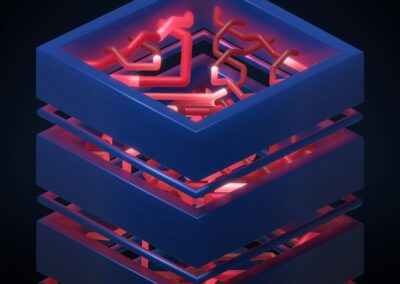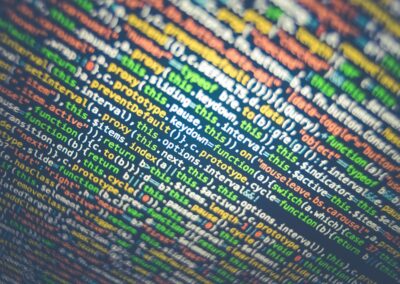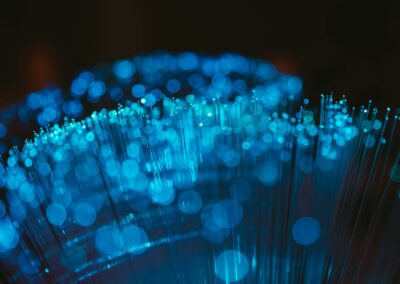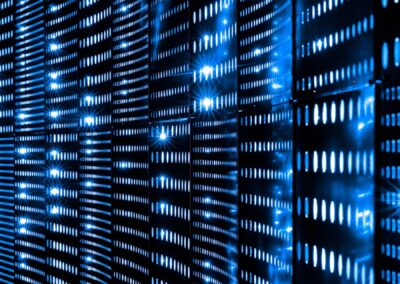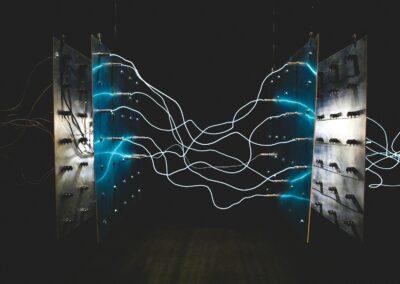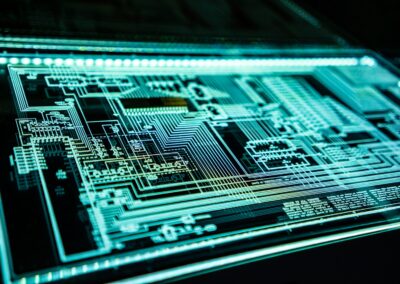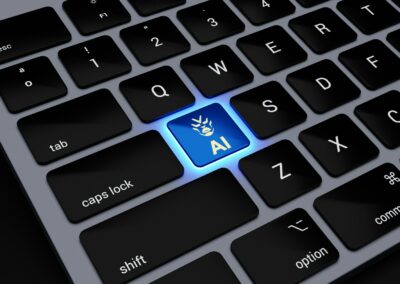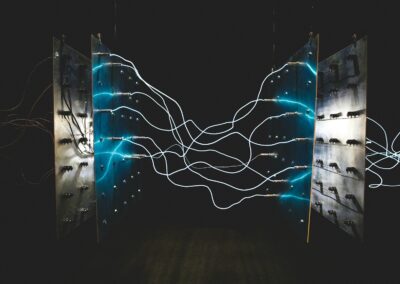How IoT Integration Transforms Energy Management
In the rapidly evolving landscape of digital transformation, integrating IoT with legacy energy management systems has become a critical strategy for utility providers aiming to enhance their services. This integration not only modernizes existing infrastructure but also brings unprecedented efficiencies and capabilities to energy management processes. In regions like Saudi Arabia and the UAE, where urban development and smart city initiatives are accelerating, such integration is particularly impactful.
Improving Real-Time Data Collection and Analysis
One of the primary benefits of integrating IoT with legacy energy management systems is the ability to collect and analyze real-time data. IoT devices, such as smart meters and sensors, provide continuous streams of data regarding energy consumption, grid performance, and environmental conditions. This real-time data collection enables utility providers to monitor energy usage patterns and system health with greater accuracy and immediacy.
For instance, in Riyadh, smart grid projects are leveraging IoT technology to optimize energy distribution and reduce outages. By analyzing data from IoT devices, utility providers can predict peak usage times and adjust supply accordingly, ensuring a stable and efficient energy distribution network. This proactive approach not only enhances service reliability but also minimizes operational costs and improves customer satisfaction.
Enhancing Predictive Maintenance and Fault Detection
Another significant advantage of integrating IoT with legacy energy management systems is the improvement in predictive maintenance and fault detection capabilities. Traditional energy management systems often rely on periodic inspections and manual reporting, which can lead to delayed response times and increased downtime. IoT devices, however, continuously monitor the condition of equipment and infrastructure, identifying potential issues before they escalate into major problems.
In Dubai, utility providers are using IoT sensors to monitor the health of transformers, substations, and distribution lines. These sensors detect anomalies such as overheating, vibration, or abnormal voltage levels, alerting maintenance teams to take preventive action. This predictive maintenance approach reduces the risk of unexpected failures, extends the lifespan of equipment, and ensures uninterrupted energy supply to consumers.
Optimizing Energy Efficiency and Sustainability
The integration of IoT technology also plays a crucial role in optimizing energy efficiency and promoting sustainability. By providing granular insights into energy consumption patterns, IoT devices enable utility providers to implement more effective demand response programs and energy-saving initiatives. This is particularly relevant in regions with ambitious sustainability goals, such as Saudi Arabia and the UAE.
For example, smart meters deployed in residential and commercial buildings in Riyadh provide detailed usage reports, helping consumers understand their energy consumption and identify opportunities for savings. Additionally, utility providers can incentivize energy-efficient behaviors through dynamic pricing models and reward programs. These measures not only reduce overall energy demand but also contribute to environmental sustainability by lowering carbon emissions.
Overcoming Challenges in IoT Integration
Ensuring Data Security and Privacy
While the benefits of integrating IoT with legacy energy management systems are substantial, the process is not without challenges. Ensuring the security and privacy of data collected from IoT devices is a paramount concern. The interconnected nature of IoT systems can create vulnerabilities that cybercriminals may exploit, leading to data breaches and service disruptions.
To mitigate these risks, utility providers in the UAE are implementing robust cybersecurity measures, including encryption, secure communication protocols, and regular security audits. Additionally, adopting a zero-trust security model, which assumes that threats could come from both outside and inside the network, further enhances data protection. Continuous monitoring and rapid response capabilities are also crucial in detecting and neutralizing threats in real-time.
Addressing Interoperability Issues
Another challenge in integrating IoT with legacy energy management systems is ensuring interoperability between diverse technologies and platforms. Legacy systems, often built on proprietary technologies, may not readily communicate with modern IoT devices and cloud-based analytics platforms. This can hinder the seamless integration and efficient functioning of the combined system.
In Dubai, utility providers are addressing this challenge by adopting open standards and protocols that facilitate interoperability. Utilizing middleware solutions that act as intermediaries between legacy systems and IoT devices can also bridge compatibility gaps. This approach allows for a cohesive and integrated energy management system that leverages the strengths of both legacy and modern technologies.
Managing the Transition and Training Workforce
The transition to an IoT-enabled energy management system requires careful planning and execution. Utility providers must ensure that their workforce is adequately trained to operate and maintain the new system. This involves upskilling employees in IoT technologies, data analytics, and cybersecurity practices. Moreover, change management strategies are essential to address resistance and ensure a smooth transition.
In Riyadh, utility companies are investing in comprehensive training programs and workshops to equip their staff with the necessary skills. Collaborating with technology partners and educational institutions can also facilitate knowledge transfer and foster innovation. By building a knowledgeable and skilled workforce, utility providers can maximize the benefits of IoT integration and drive continuous improvement in their services.
Conclusion
In conclusion, integrating IoT with legacy energy management systems offers substantial benefits for utility providers in Saudi Arabia, the UAE, and beyond. From enhancing real-time data collection and predictive maintenance to optimizing energy efficiency and overcoming integration challenges, IoT technology is transforming the energy sector. By adopting robust security measures, ensuring interoperability, and investing in workforce training, utility providers can navigate the complexities of IoT integration and achieve sustainable success in the digital age. As cities like Riyadh and Dubai continue to innovate and embrace smart technologies, the integration of IoT with legacy systems will play a pivotal role in shaping the future of energy management.
#IoTIntegration #EnergyManagement #LegacySystems #UtilityServices #SmartGrid #DigitalTransformation #SaudiArabia #UAE #Riyadh #Dubai #ModernTechnology #BusinessSuccess #LeadershipSkills #ProjectManagement #Cybersecurity #Sustainability











